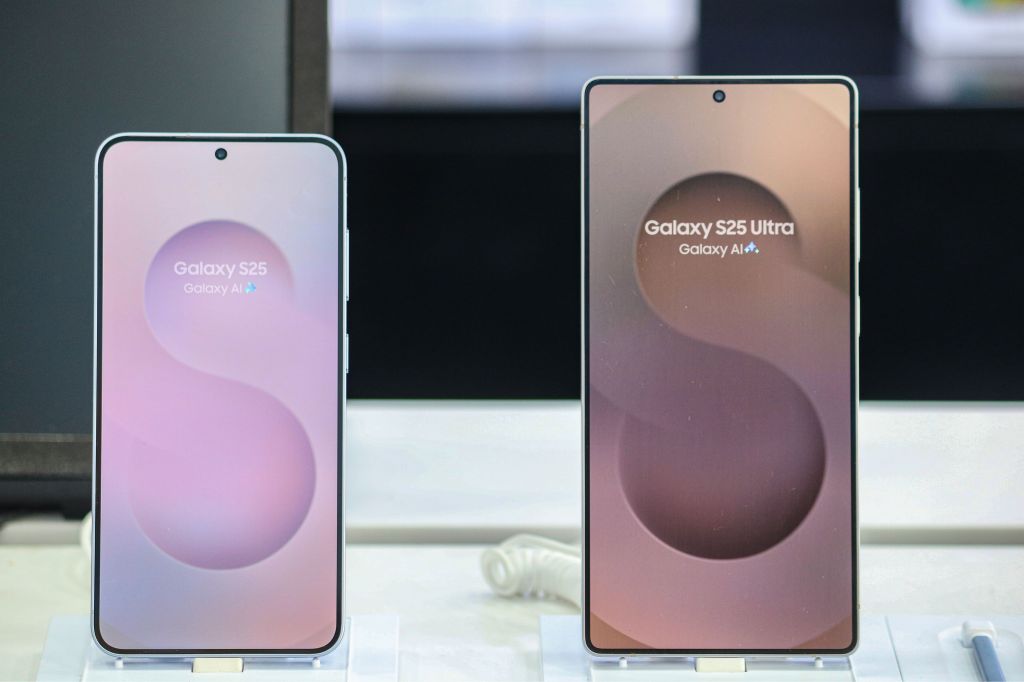Phone Plans for Travelers 55+: T-Mobile vs. the Competition
T-Mobile offers travel perks on certain plans. Are the plans worth the price compared to other options?


International travel can be an enriching experience. From navigating new languages to managing different time zones, every detail matters. At the same time, traveling abroad requires a lot of planning.
Along with securing visas, looking for ways to save on flights, learning customs and in some cases, obtaining immunizations before leaving, you don't want to forget about how you'll remain connected during your trip. After all, you'll want to touch base with loved ones or have a reliable connection in case an emergency arises.
Thankfully, many cellular providers have your back with international plans. Chief among them is T-Mobile. We'll detail the international travel perks T-Mobile offers and compare them to other carriers offering similar services.
From just $107.88 $24.99 for Kiplinger Personal Finance
Become a smarter, better informed investor. Subscribe from just $107.88 $24.99, plus get up to 4 Special Issues

Sign up for Kiplinger’s Free Newsletters
Profit and prosper with the best of expert advice on investing, taxes, retirement, personal finance and more - straight to your e-mail.
Profit and prosper with the best of expert advice - straight to your e-mail.
Eliminate roaming charges with these plans
If you're 55 or older, T-Mobile has three senior phone plans available. All three offer the same perks as regular plans at a discounted rate.
How much can you save? It depends on the plan you want. The Essential Choice 55+ is the most affordable at $45 per month for one line. However, under this plan, you would need to pay $0.25 per minute for unlimited texting and calling in 215 countries.
Meanwhile, the two other, more elevated plans feature unlimited texting, calling and high-speed internet access at no extra charge. The Experience More w/ 55+ is $70 per month for one line with 5GB of high-speed data for international travel, while the Experience Beyond w/ 55+ is $85 per month for one line and features 15GB of international data.
Explore each plan to determine which option might work best for your needs:
These plans allow you to save, earn free streaming perks and remain connected when you travel to more than 215 countries.
What to know about traveling abroad with your phone
As part of your travel prep, check to see coverage options for your destination. If you have T-Mobile, you can visit its travel website, enter the country you're visiting and the device you have.
From there, it shows you a coverage map of the country you're visiting. It will also say if it's one of the more than 215 countries offered under coverage.
Want to use your cell phone on a cruise? T-Mobile customers can check their international cruise coverage and device compatibility with a few clicks. The cruise coverage tool works similarly to the travel tool, in that you enter your cruise line, destination and your device. You'll be able to see what your plan includes before you set sail.
As a best practice, before leaving a US port, you should disable roaming on your phone until you're out to sea. If you leave it on, it could connect to your ship's satellite-based mobile networks and you might incur roaming charges.
Are T-Mobile's travel perks a good deal?
It depends on your needs and budget. For most customers, this is a smart deal to consider because of all the other perks you receive with it. T-Mobile's Experience Beyond 55+ plans feature streaming benefits, free AAA, a five-year price lock guarantee on plans and full flight texting and streaming through Wi-Fi, where available.
Plus, you can receive a free iPhone when you transfer your service to them:
When you transfer service to T-Mobile. They will also pay off your old phone, up to $800.
To give you a cost comparison, here's a look at how T-Mobile compares to other providers:
Carrier | Price for 55+ plans | International data | Countries covered | Flight texting and streaming included |
|---|---|---|---|---|
T-Mobile | Starting from $70 | Up to 15GB | 215+ | Where available |
Verizon | Only available in FL | Up to 15GB | 210+ | No |
AT&T | Starting from $40 | Need a day pass | 210+ | No |
Google Fi | No 55+ plans, one line is $65 for international perks | Up to 50GB | 200+ | No |
Mint Mobile | Starting from $15 per month | Up to 1GB a day with the Minternational Plan for $5 per | 180+ | No |
While other providers do offer lower price points, T-Mobile offers exceptional value for the price. For most travelers, you'll receive coverage on your trips overseas without any hoops to jump through.
Of course, there are alternatives to consider, too. You could buy a SIM card from a provider in the country you visit. These work best for travelers on extended stays that want to text, call and have high-speed data.
You can also buy an international eSIM card before your trip from providers like Saily. How they work is they allow you to switch carriers, so you have access to high-speed data while away from home.
They're also affordable. Say you're traveling to Japan and need some data while over there. Saily has plans as low as $3.99 for 1GB of high-speed data allowance for seven days. You can also buy a 15-day unlimited pass for $48.99. Keep in mind that this is for data only.
Ultimately, there are many ways to remain connected when you travel overseas. And when comparing options, T-Mobile offers excellent value and ease of use in that you don't have to purchase separate packages when using Experience 55+ plans.
However, if you don't plan to travel overseas often and just want a no-frills option, either the lower-tier T-Mobile plan or Mint Mobile's plans are also wise alternatives to consider.
Related content
Profit and prosper with the best of Kiplinger's advice on investing, taxes, retirement, personal finance and much more. Delivered daily. Enter your email in the box and click Sign Me Up.

Sean is a veteran personal finance writer, with over 10 years of experience. He's written finance guides on insurance, savings, travel and more for CNET, Bankrate and GOBankingRates.
-
 It's Beginning to Look a Lot Like a Santa Rally: Stock Market Today
It's Beginning to Look a Lot Like a Santa Rally: Stock Market TodayInvestors, traders and speculators are beginning to like the looks of a potential year-end rally.
-
 The 2026 Retirement Catch-Up Curveball: What High Earners Over 50 Need to Know Now
The 2026 Retirement Catch-Up Curveball: What High Earners Over 50 Need to Know NowUnlock the secrets of the 2026 retirement catch-up provisions: A must-read for high earners aged 50 and above.
-
 How Much a $100K Jumbo CD Earns You
How Much a $100K Jumbo CD Earns YouYou might be surprised at how fast a jumbo CD helps you reach your goals.
-
 Here's How Much You Can Earn with a $100,000 Jumbo CD
Here's How Much You Can Earn with a $100,000 Jumbo CDYou might be surprised at how fast a jumbo CD helps you reach your goals.
-
 A Financial Planner Takes a Deep Dive Into How Charitable Trusts Benefit You and Your Favorite Charities
A Financial Planner Takes a Deep Dive Into How Charitable Trusts Benefit You and Your Favorite CharitiesThese dual-purpose tools let affluent families combine philanthropic goals with advanced tax planning to generate income, reduce estate taxes and preserve wealth.
-
 How Financial Advisers Can Best Help Widowed and Divorced Women
How Financial Advisers Can Best Help Widowed and Divorced WomenApproaching conversations with empathy and compassion is key to helping them find clarity and confidence and take control of their financial futures.
-
 Your Guide to Buying Art Online
Your Guide to Buying Art OnlineFrom virtual galleries to social media platforms, the internet offers plenty of places to shop for paintings, sculptures and other artwork without breaking the bank.
-
 Samsung Galaxy S25 Ultra for $4.99 a Month: A Closer Look at Verizon’s Deal
Samsung Galaxy S25 Ultra for $4.99 a Month: A Closer Look at Verizon’s DealVerizon’s aggressive pricing makes Samsung’s top-tier phone tempting, but the real cost depends on your plan and how long you stay.
-
 I'm 59 With $1.7 Million Saved and Just Lost My Job. Should I Retire at 59½, or Find New Work?
I'm 59 With $1.7 Million Saved and Just Lost My Job. Should I Retire at 59½, or Find New Work?We asked professional wealth planners for advice.
-
 Metro by T-Mobile Is Giving Away This Samsung Galaxy A16: Which Plans Are Eligible?
Metro by T-Mobile Is Giving Away This Samsung Galaxy A16: Which Plans Are Eligible?Metro by T-Mobile is offering free Samsung Galaxy A16 phones on eligible plans right now. Here’s how the deal works.
-
 I Drive and Collect Classic Cars: Here’s How I Got in the Game Without Spending a Fortune
I Drive and Collect Classic Cars: Here’s How I Got in the Game Without Spending a FortuneAre classic cars a hobby or an investment strategy — or both? Either way, the vintage car scene is much cooler and more affordable than you think.

